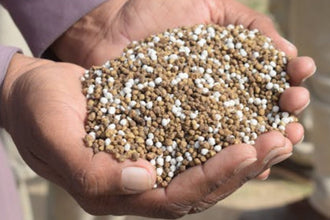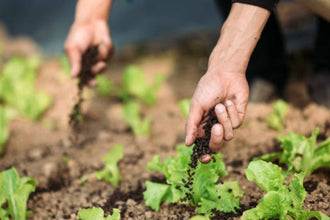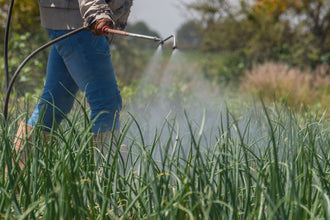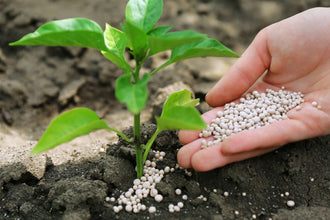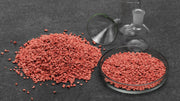
Phosphorus fertilizer makes a huge difference when you want your plants to grow strong roots and produce amazing flowers. This nutrient works quietly in the background, helping everything from tiny seedlings to full-grown plants. Most gardeners spend all their time worrying about nitrogen for green leaves, but phosphorus deserves way more attention.
Your plants actually need phosphorus from the moment they sprout until they're ready to produce seeds. Baby plants use it to build those important first roots. Older plants keep using it to make colorful flowers and tasty fruits. Skip the phosphorus, and you'll end up with weak roots, sad-looking blooms, and crops that don't live up to your expectations.
How Phosphorus Fertilizer Actually Works in Your Soil
Phosphorus behaves totally different from other plant nutrients once it hits your garden soil. Nitrogen washes away with the first big rainstorm, but phosphorus sticks around. It basically glues itself to soil particles and stays put.
This sticking power has good points and bad points. The good news is you won't lose your phosphorus fertilizer investment when it rains hard. The bad news is your plants might have trouble getting to it, especially if you have clay soil or soil that's too alkaline.
Plants grab phosphorus through their root tips, but the nutrient moves super slowly through dirt. Your plant roots have to actually grow toward where you put the phosphorus. That's why where you place this fertilizer matters way more than with other nutrients.
Your Plants Are Telling You They Need Phosphorus
Plants get pretty obvious about showing phosphorus problems. The older leaves start turning purple or red around the edges first. This happens because plants are smart and move phosphorus from old leaves to help new growth.
Root growth basically stops when phosphorus runs low. Your seedlings might sit there looking stunted even though you're watering them perfectly and they're getting plenty of sun. Plants that should be flowering might skip blooming altogether or give you pale, wimpy flowers.
Fruit production takes a real hit without enough phosphorus. Your tomato plants might set way fewer fruits than normal. Flower gardens end up looking disappointing with small, dull blooms right when you want them looking their best.
Soil Testing Shows What's Really Available
Getting your soil tested is the only real way to know if your plants can actually use the phosphorus that's there. Lots of soils have phosphorus that's basically locked up and useless to plant roots. Testing tells you what's there versus what your plants can actually get to.
You can buy cheap test kits at the garden center, but professional testing gives you way better information. These tests check your pH, organic matter, and other stuff that affects whether plants can use phosphorus. Spending money on good testing saves you from buying fertilizer you don't need.
The test results help you pick the right type of phosphorus fertilizer for your specific dirt. Sandy soil needs different phosphorus sources than clay soil. Your pH level changes which forms of phosphorus work best.
Different Types of Phosphorus Fertilizer You Can Use
You've got two main camps when picking phosphorus fertilizer sources. Organic options take their time releasing nutrients, while synthetic fertilizers get to work right away. Knowing the difference helps you match the right stuff to what your garden needs.
Rock phosphate is probably the most common organic phosphorus source you'll find. This natural rock breaks down slowly and feeds your plants for several seasons. It works best in acidic soil where the rock can actually dissolve.
Bone meal is another organic choice that lots of gardeners really like. This ground-up animal bone has phosphorus plus calcium, which helps build strong plant cells. Bone meal breaks down faster than rock phosphate but still gives you gradual feeding over time.
Synthetic Options That Work Fast
Triple superphosphate packs a lot of available phosphorus into a small package. This synthetic option fixes serious phosphorus problems quickly. Since it's concentrated, you don't need to use as much compared to organic sources.
Diammonium phosphate gives you nitrogen and phosphorus together in one bag. This combo fertilizer feeds both leaf growth and root development at the same time. Many gardeners find this convenient for general garden use.
Monoammonium phosphate offers another synthetic choice with different nutrient ratios. Picking between these synthetic phosphorus fertilizers usually comes down to how much nitrogen your soil needs and what your pH looks like.
Modern Slow-Release Technology
Newer slow-release formulas control when nutrients become available much better than old-school options. Coated granules release phosphorus based on soil temperature and how wet things are. This tech means you don't have to fertilize as often while keeping plants fed steadily.
Some polymer-coated phosphorus fertilizers can feed your plants for entire growing seasons with just one application. The coatings break down bit by bit, releasing phosphorus when plants need it most. This works really well for perennial gardens and established flower beds.

How to Apply Phosphorus Fertilizer the Right Way
Getting your application technique right makes all the difference between success and wasted money. You can spread it on top of the soil sometimes, but working it into the dirt usually gets better results.
The best time to add phosphorus fertilizer is before you plant anything. Work it into the top 6 to 8 inches of soil where most roots hang out. This puts nutrients right where roots can find them easily.
For plants already growing, you need to side-dress them carefully. Make shallow ditches around your plants, staying a few inches away from stems so you don't damage roots. Put fertilizer in these ditches and cover with soil to keep nutrients from washing away.
When to Apply for Best Results
Spring applications support early root growth and flower bud development. Apply your phosphorus fertilizer about 2 to 3 weeks before your last expected frost. This timing gets nutrients available right when plants start growing actively.
Fall applications help perennial plants and trees get ready for winter. Phosphorus supports root growth that keeps happening even after the tops stop growing. Strong roots help plants survive winter and come back healthier in spring.
Don't apply phosphorus fertilizer during dry spells when plants can't absorb nutrients well. Soil moisture helps dissolve phosphorus and move it toward root zones. A light watering after you apply helps nutrients become available.
Mixing Phosphorus with Other Plant Foods
Balanced nutrition works better than just focusing on one nutrient. Phosphorus works more effectively when plants have enough potassium and trace nutrients too. Most gardeners see better results from complete feeding programs rather than just adding phosphorus alone.
Your nitrogen levels affect how well plants can use phosphorus in complicated ways. Too much nitrogen can actually block phosphorus uptake, while too little nitrogen limits overall growth. Keeping nutrients balanced takes attention to all the essential elements.
Adding organic matter improves phosphorus availability no matter which fertilizer source you choose. Compost, aged manure, and other organic stuff help convert bound phosphorus into forms plants can actually use. Building up soil organic matter gives you benefits that last way longer than one growing season.
Being Smart About Environmental Impact
Using phosphorus fertilizer responsibly protects water quality while keeping your plants healthy. Too much phosphorus can cause algae problems in nearby streams and ponds. Following soil test recommendations prevents over-application while making sure your plants get what they need.
Phosphorus moves mainly through soil erosion rather than dissolving and leaching away, so stopping soil runoff becomes really important. Keep good plant cover, avoid applying before big storms, and stick to recommended rates to minimize environmental problems.
Strips of plants near water sources help catch any phosphorus that might move with surface water. These planted buffers filter runoff and protect sensitive water ecosystems from nutrient pollution.
Sustainable Practices That Make Sense
Recycling organic materials cuts down on how much mined phosphorus fertilizer you need. Composting kitchen scraps and yard waste creates phosphorus-rich soil improvements. These practices close the nutrient loop while reducing waste.
Some cover crops can help make soil phosphorus more available to your main crops. Certain cover crop species actually mobilize bound phosphorus, making it accessible for plants you grow next. This natural approach reduces fertilizer needs while improving soil health.
Precision application techniques reduce waste while maintaining good plant nutrition. Commercial operations use GPS-guided spreaders and variable-rate technology to optimize phosphorus use. Home gardeners can get similar precision through careful measuring and targeted applications.
Start Growing Better Plants with Smart Phosphorus Use
Understanding phosphorus fertilizer opens up new possibilities for garden success. Strong root systems support vigorous plant growth, while adequate phosphorus ensures abundant flowering and good fruit production. Your garden can reach its full potential with proper attention to this often-forgotten nutrient.
Investing in soil testing and the right phosphorus fertilizer pays off through healthier plants and better harvests. Whether you go with organic sources like bone meal or synthetic options for quick results, proper phosphorus nutrition transforms struggling gardens into thriving spaces that make you proud.
Start by getting your soil tested to understand your current phosphorus levels. Pick the right fertilizer type for your soil and plant needs. Apply at proper rates and timing for maximum effectiveness. Your plants will reward careful attention to phosphorus nutrition with stronger growth, better blooms, and improved overall health that makes gardening way more enjoyable and successful.




